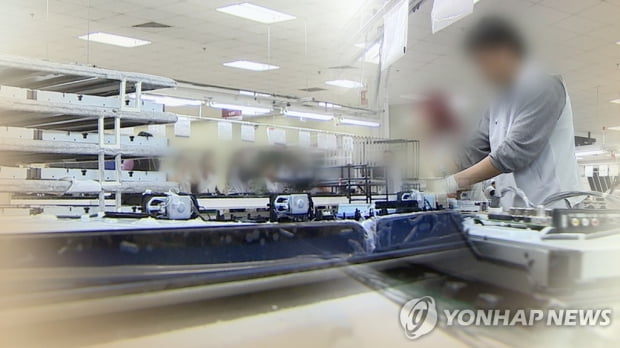Industry Research Institute survey… Reinforcement of regulations and production cost increase

Half of Korean companies that have entered China have lost their business performance, and 4 out of 10 have low utilization rates of less than 60%.
Most of the companies were concerned that the internal business environment would continue to deteriorate due to the Chinese government’s tightening regulations and rising production costs.
On the 7th, the Korea Institute of Industry and Commerce, along with the Beijing Office of the Korean Chamber of Commerce and the Korea Chamber of Commerce of China, released a report on the’Survey on the Management Environment of Chinese Enterprises’ conducted on a total of 480 companies from September to November last year.
According to the report, 54.6% of respondents said that sales in 2020 will decrease from 2019.
34.4% of respondents said that it will decrease significantly.
52.5% of respondents said that the operating profit in 2020 would decrease from the previous year (33.5% decreased significantly, 19.0% decreased).
Companies cited sluggish local demand, intensifying local competition, Corona 19, and sluggish export demand as the reasons for the decline in sales.
As for the management difficulties, a labor shortage was pointed out in addition to a decrease in local demand and intensification of competition.
When looking at the utilization rate of companies, only 25.6% was over 80%, 60-80% was 31.9%, and 40-60% was 28.5%.
The utilization rate of 4 out of 10 companies remained below 60%.
Looking at the manufacturing industry alone, 24.2% of companies with an operating rate of 80% or higher, and 33.4% of the 60-80% utilization rate were counted.
Companies said that the utilization rate was low due to Corona 19 and the dispute between the US and China.
Regarding the prospects for business in China for the next two to three years, 55.6% of respondents said they would maintain the status quo.
This was followed by expansion (23.1%), reduction (18.3%), and withdrawal and relocation (3.0%).
In the case of business outlook for the next five years, the most respondents said they would maintain the status quo (42.9%), followed by expansion (26.7%), reduction (21.0%), and withdrawal/relocation (8.0%).
Companies considering withdrawal and relocation mainly pointed out the increase in production costs in China (35%) and intensification of competition (32%).
Southeast Asia accounted for 70% of the previous target regions, and return to Korea accounted for 25%.
Most companies (58.6%) predict that China’s internal environment will deteriorate in the future.
The Chinese government’s policy (regulation), rising production costs, changes in demand markets, and unfair competition were in the order of concern.
Most of the respondents answered that they would accept it, and joint responses with affiliates, consideration of transfer and withdrawal, and submission of difficulties were also mentioned.
Among the changes in the global external environment, they cited Corona 19, conflict between the US and China, and issues on the Korean Peninsula.
As external environmental factors that will become important in the future, non-face-to-face lifestyle changes and US-China conflict were suggested.


/yunhap news
